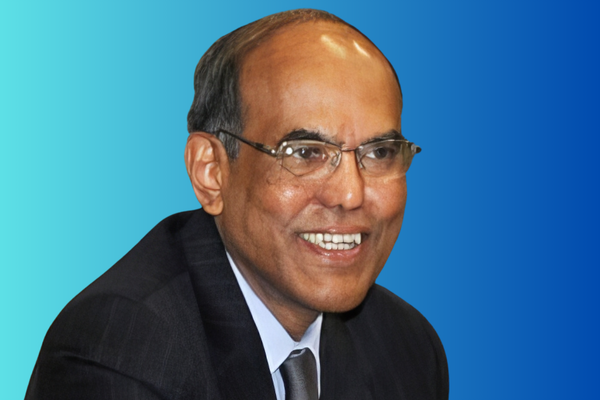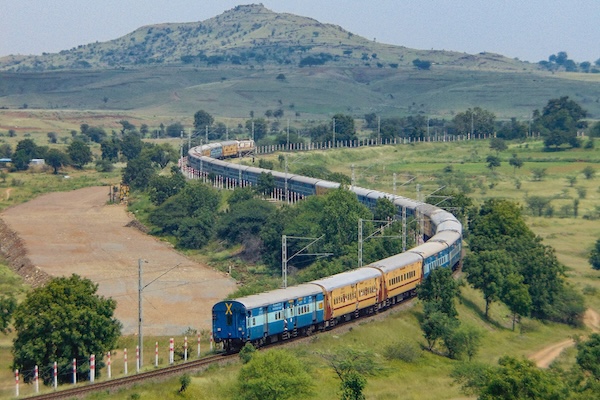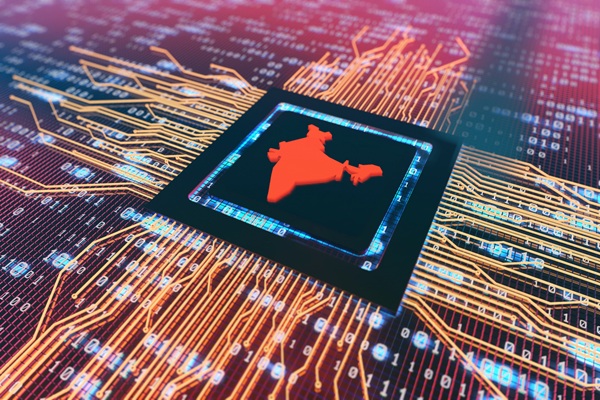.png)
Subbarao Flags RBI’s Excessive FX Intervention, Seeks Policy Clarity
RBI must walk the talk on rupee management, says the former RBI Governor, warning that persistent intervention distorts markets and weakens credibility in this third of the four-part interview series.


Kalyan Ram, a financial journalist, co-founded Cogencis and now leads BasisPoint Insight.
June 5, 2025 at 2:58 AM IST
India’s former central bank chief has questioned the Reserve Bank of India’s persistent hand in the currency markets, calling it “more interventionist than is warranted”, and warning that such an approach distorts market behaviour and stunts the development of mature financial institutions.
In the interview series themed “India 2047: Raising the Game for a Developed Future,” Duvvuri Subbarao, who served as RBI Governor from 2008 to 2013, flagged the inconsistency between the central bank’s stated policy of managing only volatility and its actual conduct.
“The RBI has historically failed to walk the talk,” he said, pointing to repeated interventions even during one-way moves of the rupee. Such interventions, he argued, blur the line between volatility management and implicit targeting, encouraging market participants to outsource risk management to the central bank.
His comments come amid growing scrutiny of the RBI’s foreign exchange strategy, especially after the rupee was held steady for months before being allowed to depreciate sharply, raising questions about policy transparency and communication.
Subbarao acknowledged the confusion triggered by that episode and stressed the need for the RBI to clearly define what constitutes volatility, and align its communication with its actions.
On India’s external stability, he remained cautiously optimistic.
While acknowledging that India’s reserves are robust by conventional metrics, he cautioned against complacency. “Any amount of reserves looks like too much in good times, and not enough in bad times,” he said, noting that financial shocks in one corner of the globe can quickly ripple across borders, as seen in the fallout from the collapse of Silicon Valley Bank.
Subbarao also weighed in on the global trade environment, describing Donald Trump’s tariff actions as a masterclass in chaotic policymaking. He welcomed India’s ongoing efforts to secure a free trade agreement with the United States but warned of near-term headwinds from weaker global growth, rising inflation, and potential dumping by China.
The bigger opportunity, he said, lies in repositioning India as an alternative to China in global value chains. But that would require a credible domestic reform agenda, from tariff rationalisation to trade governance.
This Q&A captures his candid and deeply informed perspective on the RBI’s evolving policy playbook and India’s external vulnerabilities in a shifting global order.
Edited excerpts:
Q: There has been growing criticism of the RBI’s exchange rate management. The rupee was held steady for months and then allowed to slide, leading to confusion. What should the RBI have done differently, and how should it communicate during such episodes?
A: I would not presume to give any advice, but I just want to note that no matter what the RBI does with regard to the exchange rate, it is always criticised. That is the bottom line.
That apart, let's look at what happened over the last two years, which is that the dollar strengthened continuously. The rupee should have been allowed to depreciate, but the RBI held it steady, and the rupee had become overvalued in real terms. Over the last six months, they have allowed it to find its market level.
In my own view, the RBI as an institution is more interventionist than is warranted. The stated policy of the Reserve Bank, as you’ve just noted, is that they do not target a specific exchange rate or a band. Their job, as they claim, is only to control volatility in the exchange rate. But I think the RBI has historically failed to walk the talk. Every time the RBI has intervened in the forex market, there has been a reverse interpretation, ’Okay, the RBI has intervened, therefore there must have been volatility.’ Because what is volatility has never been defined. Even a one-way movement of the rupee has been treated as volatile.
So, I think there's a strong case for the RBI to be less interventionist than it’s historically been. Not just because we need to hold a lot of reserves to intervene, which is costly, but also because such intervention is distortionary. One of the attributes of a developed country is mature markets. That means market participants must be able to adjust to two-way movement of the exchange rate. If every time the exchange rate moves, the markets are confident that the RBI will intervene and prevent that adjustment, they will never learn to manage the exchange rate. The bigger risk is that they will outsource risk management to the RBI. And the cost is passed on to the larger economy.
So, I believe there's a strong case for the RBI to be less interventionist. Of course, it must reduce volatility. It must not engineer the trajectory of movement, but only smoothen it.
I believe there is also, like you said, a communication challenge. The RBI must walk the talk, communicate as clearly as possible, and align its stance on the exchange rate with its actions.
Q: Given the level of reserves today, would you say India’s external sector is now stable?
A: First of all, we need reserves, sufficient reserves to inspire confidence within the country and around the world that India can manage its exchange rate. But there are limits to that because there is a cost to holding reserves. So, as much as we benefit from holding reserves, we must also consider the cost.
On external sector stability, I think we need to take a more pragmatic view. To believe that we have insulated ourselves against all future crises is wrong. As we’ve seen from our own experience, we are in a globalised world. Despite all that Trump is doing, we will continue to be in a globalised, financially-connected world. Whatever happens around the world will continue to impact us.
Take the tremors in the Silicon Valley Bank, for example, I think in March 2023. A small provincial bank in one US state caused a scare across markets around the world. That shows that whatever happens anywhere in the world impacts us. So, we must be on our guard. I don't believe we can ever be complacent and say that we have insulated ourselves against all crises, especially a country like India, where we depend on the world for investment and exports.
Q: Compared to the taper tantrum and global financial crisis, how does India’s external position look today?
A: We certainly have a higher level of reserves today relative to our GDP, relative to our international position, and relative to our short-term liabilities. By all standard metrics, we have a robust amount of reserves. But as they say, any amount of reserves looks like too much in good times, and no amount is large enough in bad times.
So, to believe that just because we have large reserves, we have insulated ourselves against all assaults is wrong. We've learned from our own experience and from textbooks, Kindleberger, *Manias, Panics, and Crashes*, etc. We've got to be on our guard.
Q: There was the taper tantrum, and now some are calling this a ‘tariff tantrum.’ With ongoing FTA talks and global trade tensions, how should India respond?
A: That’s a very challenging question because it is a very fluid situation.
Trump’s tariffs have been a masterclass in chaotic policymaking, flip-flops, U-turns, announcements followed by backtracking. A lot has happened over the last three months. When, if at all, we’ll reach equilibrium is very uncertain. There are just too many moving parts.
But as you said, India is actively negotiating an FTA with the US, that’s a good thing. If we get a good FTA that protects our interests, bearing in mind that we must also give something to the US in return, it could be beneficial. If it's seen as a good deal, that’s a positive.
But that doesn't mean there are no negative implications. But in the short term especially, there will be negative consequences from Trump’s tariffs in the US and around the world.
Take the US, first. Trump’s tariffs, along with recent tax cuts, a higher fiscal deficit, bloating debt and deportation of illegal immigrants, all of these together are going to fuel inflation, sap consumer confidence, and hurt US consumption. Investor confidence will decline, US investment will fall, and exports will be hit due to retaliatory effects. There may be no recession, but the US economy will certainly slow down. US exceptionalism will fade.
China, the other large economy, is also bound to slow down because of all this fluidity. If the world’s two largest economies slow down, that will impact us, both in terms of exports and investment. Then there is the concern that China, due to excess capacity, will start dumping, which will hurt our private investment.
So, if our short-term prospects on exports and investment are negative, we will be hit. Of course, there are short-term positives. For example, cheaper Chinese goods could reduce inflationary pressure. That would also give RBI more headroom to cut interest rates and support growth. But those are short-term gains.
So, I would say it would be good if we can get an FTA in place quickly enough, but there will be short-term negative implications from what’s happening globally.
In the medium to long term, I believe we can turn Trump tariffs into an opportunity, both by way of trade and investment. To the extent Chinese products become too costly because of tariffs, we have an opportunity to replace them. During Trump 1.0, we benefited significantly from trade diversion. The potential gain this time will be larger because tariffs on China are across the board and much higher.
As much as trade diversion could be a potential gain for us, investment diversion will be an even bigger gain. For global investors looking to derisk themselves from China, we should position ourselves as the +1 in the ‘China’ equation.
But to exploit these potential gains from trade and investment, we must get our act together. That means finalising FTAs not just with the US but with other large trading partners. We’ve already signed an FTA with the UK, but we must hasten the FTA with the EU as well. We must shed our fears and enter into a large multilateral trade bloc, reduce tariffs across the board, and improve governance as we discussed earlier.
This could be a potential 1991-like opportunity to deregulate and liberalise.
Continued in Part 4 or the concluding part of the interview series, which deals with fiscal federalism.
Part 1 of the interview dealt with India’s ambition to become a developed country by 2047 and Part 2 with the review of the inflation-targeting framework.



